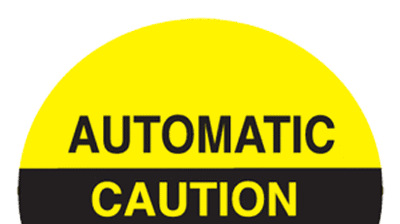CABINETRY & MILLWORK
Defective Design or Defective Workmanship?
Who is responsible?
By Michael Panish
Cabinetry & Millwork Expert Witness
Download PDF of this article here
My job as a cabinetry and millwork expert witness is to inspect and evaluate casework, cabinetry, or millwork that may have either failed or may be deficient in some way. Many of the past cases where I have been designated as the cabinetry and millwork expert witness have involved analyzing products that no longer exist because they have either been replaced or destroyed. What is available for review is often in the form of architectural elevations (renderings), photographs of the damaged cabinetry, or shop drawings and samples of the materials that were used. Generally, there is a question as to what entity is responsible for the monetary loss sustained. The usual course of action by attorneys is to sue all parties in the chain of events, from design through installation.
Many times a cursory inspection reveals basic construction flaws that were the fault of the fabricators and installers. A cabinet job simply was not manufactured to satisfy the needs of the client, either in form, size or function, or the perfectly built cabinetry was ruined by the inexperienced or low quality installation. Many times finishes are the prime concern. The ultimate appearance of the finished product may not be acceptable to the owner or the client. Misrepresentation of products, finish samples and unconfirmed choices are often to blame for the latter dispute. Further disputes develop over contracted services, promises and agreements that were not specifically spelled out in the work order or project contract. In some cases, the client or unhappy owner is unrealistic as to their expectations and are unwilling to take responsibility for their actions.
Resolving the above disputes is generally an easier situation than a case that results in serious personal injury. It is mostly a matter of book keeping, record analysis, and knowledge of the industry practices and standards that dictate the equitable settlement of these claims.
In a personal injury claim, the stakes are usually much greater. The responsibility of the individually involved parties is more difficult to quantify and isolate and sometimes liability is shared and commingled. The size and scope of the project often influences the various levels of culpability of the involved parties.
When discussing a major project for a hotel remodel, such as cabinetry, casework, or millwork, it is usually part of a total design package initiated by the design and development department of that entity. Sometimes designs are generated from in-house designers but are often contracted out to an outside designer service. If a new retail outlet such as a bank or chain store requires new cabinets, a designer or architect usually becomes the lead entity. Conceptual designs are frequently contracted out to specific trades through these architectural and or design firms to develop a standardized franchise concept. In the case of a housing tract or condominium development, architects and designer services generally share the development of the spatial and cosmetic concepts in these projects.
In all cases, individual circumstances affect the level of involvement and participation percentage that an entity claims interest in. Design flaws created by an architect or designer could be directly linked to product failure. A responsible cabinet manufacturer must have the competence and ability to interpret flaws in a design concept and address the problem prior to fabrication of these flawed products. While an architect could be seen as the general overseer of a project and ultimately responsible for the injury, it has also been the case that the ultimate liability for an injury can be the responsibility of the last person that touched the product. However, every case is different.
In one recent personal injury case that took place in a renovated hotel, blame was shared among six different parties. The cabinet contractor, cabinet installers, designers, architects, hotel management and project managers were all willing to participate in settlement. In another case which is still ongoing, each contractor and designer involved is attempting to place the blame on every entity but themselves in an effort to remove their level of involvement and extricate their companies from the lawsuit.
It is of the utmost importance to find a cabinetry expert witness that has had years of hands on experience in these types of projects. There are many variables that would only be known to a skilled tradesman, and questions that can be formulated with the help of this expert will greatly enhance the perspective that can be formulated after accurate and precise questions are answered during your discovery and investigation.
Michael Panish is an expert witness, forensic analyst, and consultant in the field of construction. He is licensed in the State of California as a General Building Contractor, Cabinet & Millwork Contractor, Door, Lock & Security Equipment Contractor, Paint & Finish Contractor, and Electrical Contractor. Mr. Panish has over 35 years of hands-on experience in the construction industry. He has been involved in concept designs for Hotels, hospitals, chain stores and franchised retail stores. He has participated in cabinet and millwork defect cases throughout the country. He has been designated as lead expert in the field of cabinets and millwork and has been consultant for both plaintiff and defense. Mr. Panish has provided testimony in construction defect, poor workmanship, product liability, and personal injury cases relating to most construction trades, doors, locks, automatic doors, cabinetry, and custom casework. Mr. Panish has offices in California and the New England area and is available for nationwide consultation, forensic analysis, inspection, report, and testimony. Michael Panish can be reached at www.ConstructionWitness.com for more information.
Articles written and published by Michael Panish pertaining to Cabinetry:



